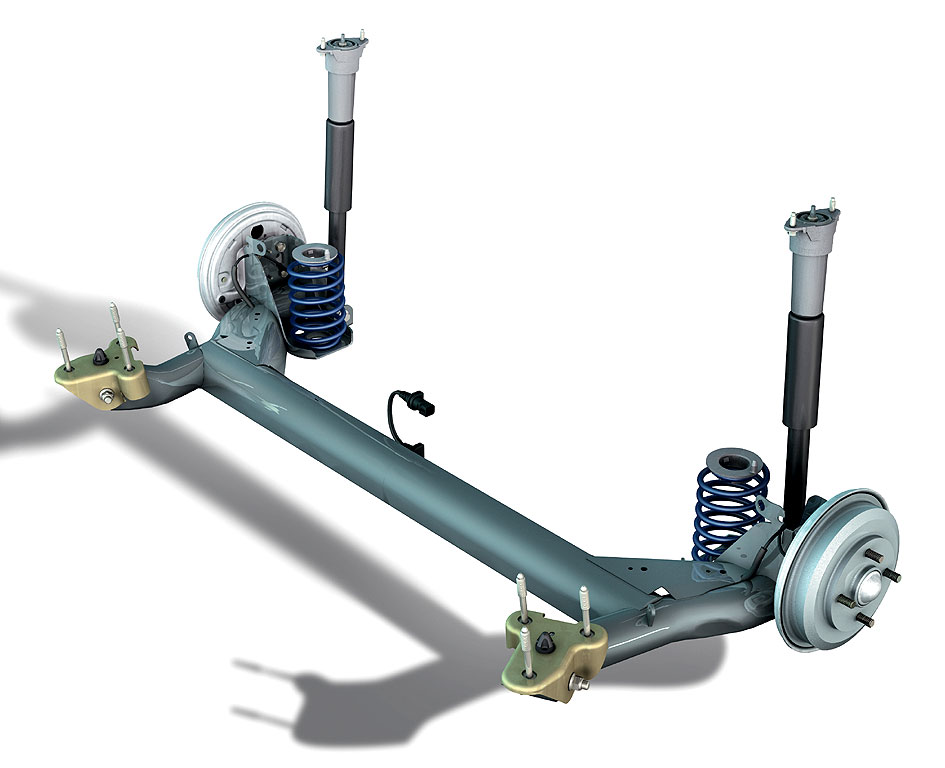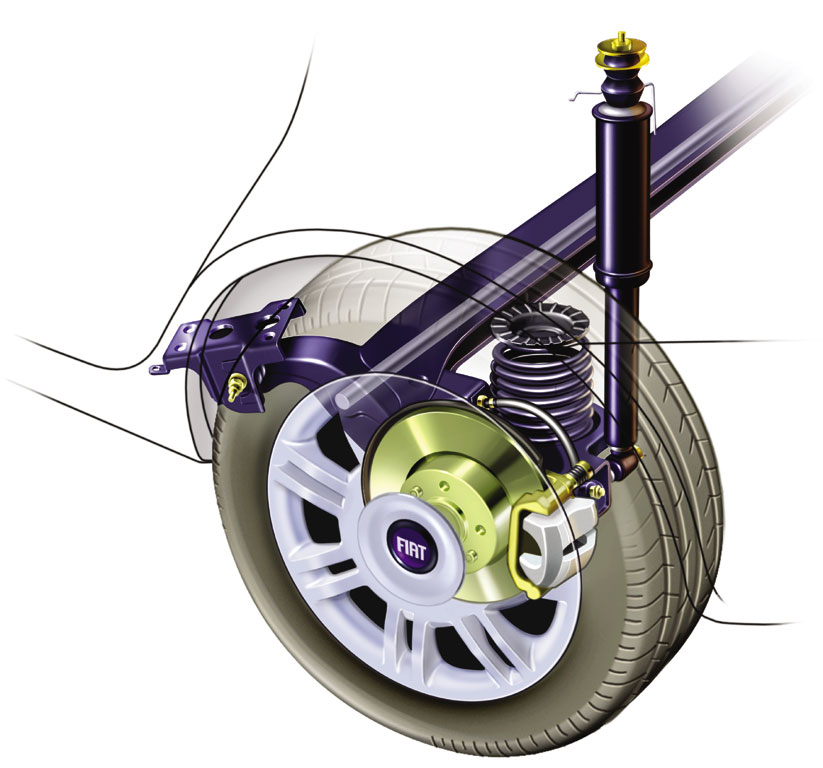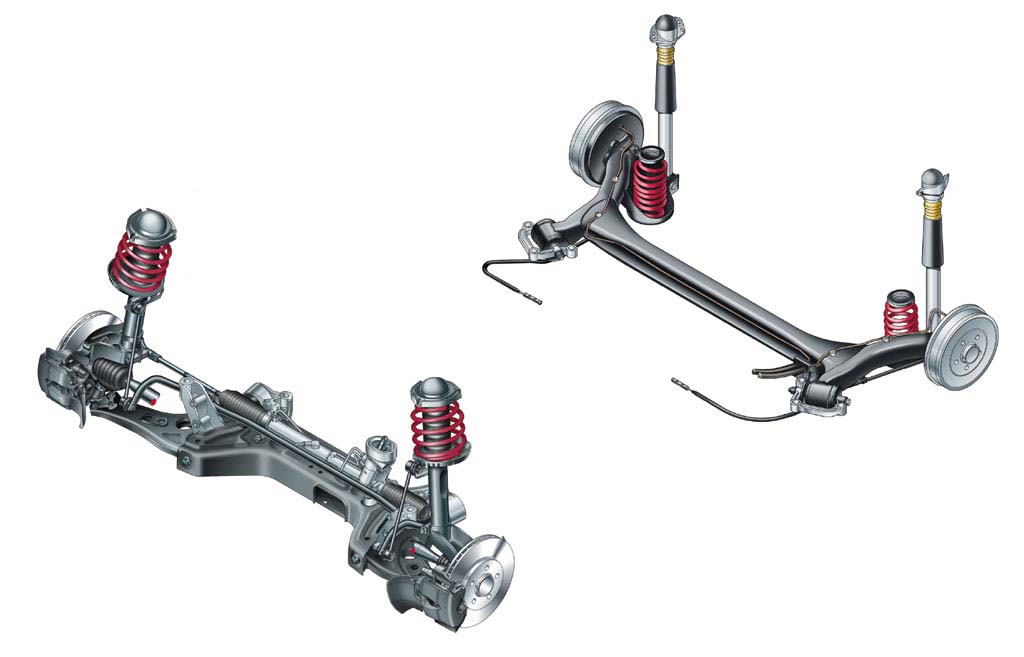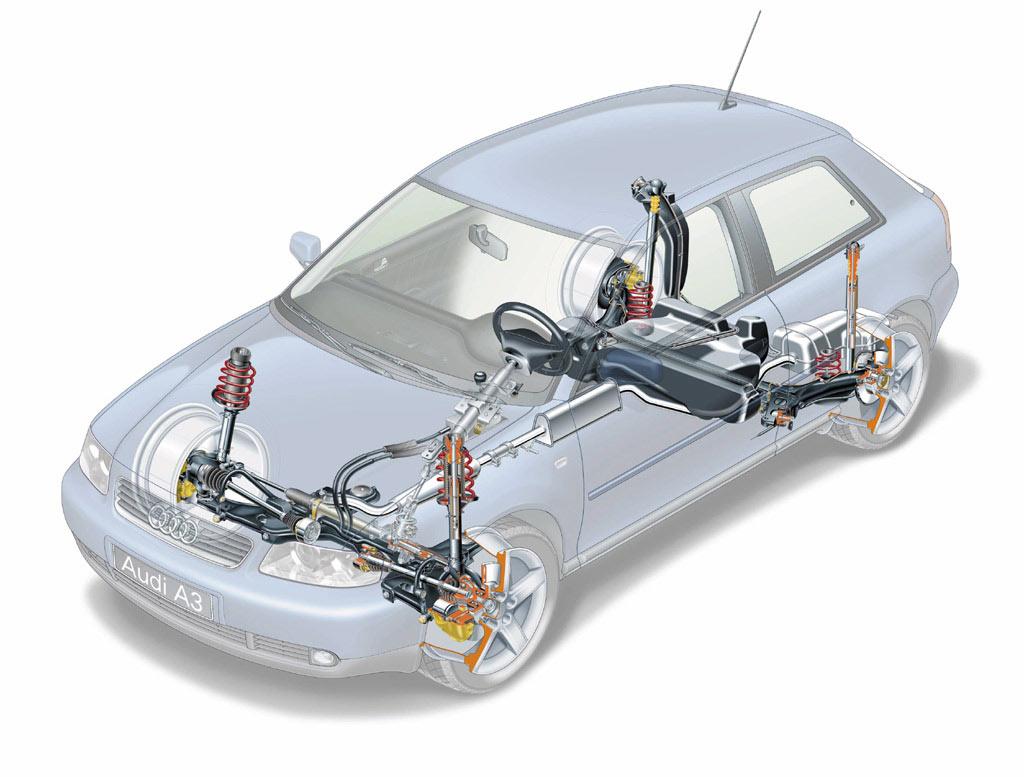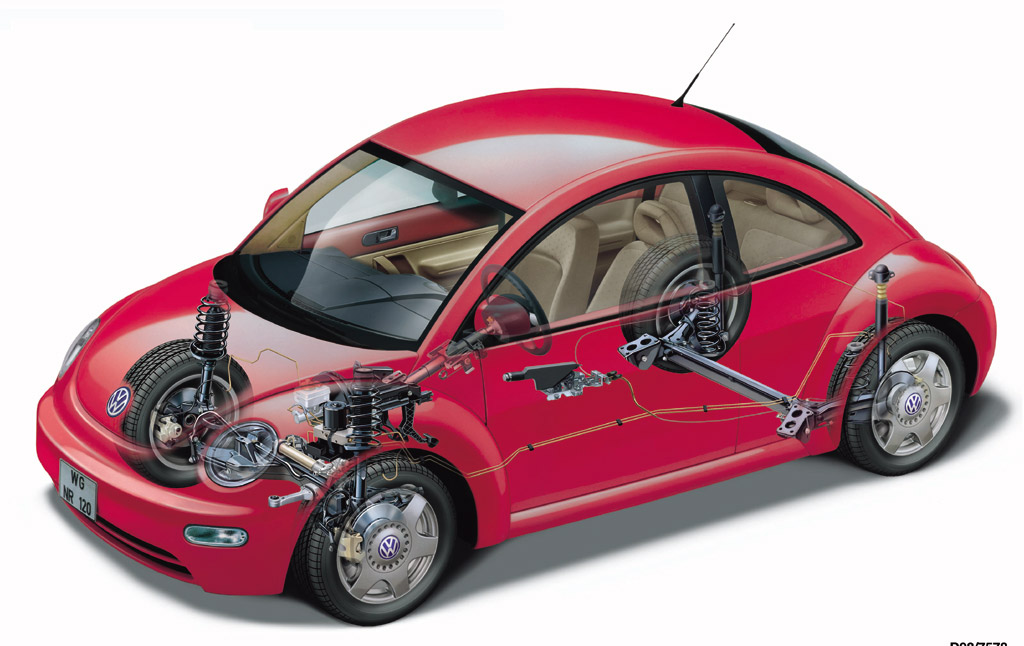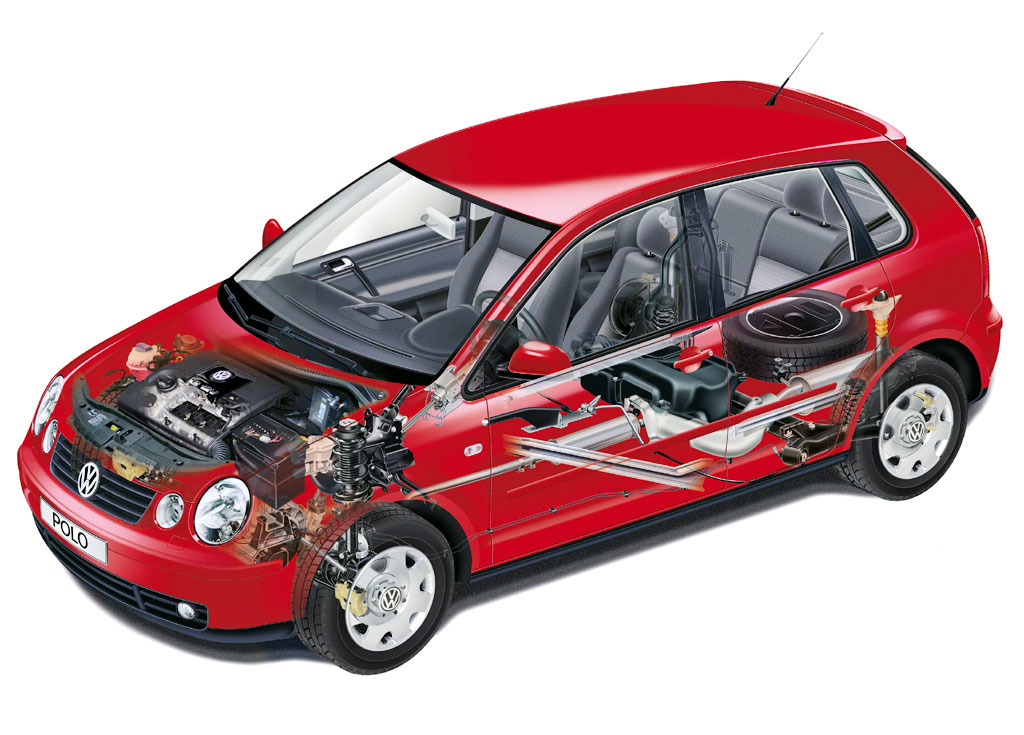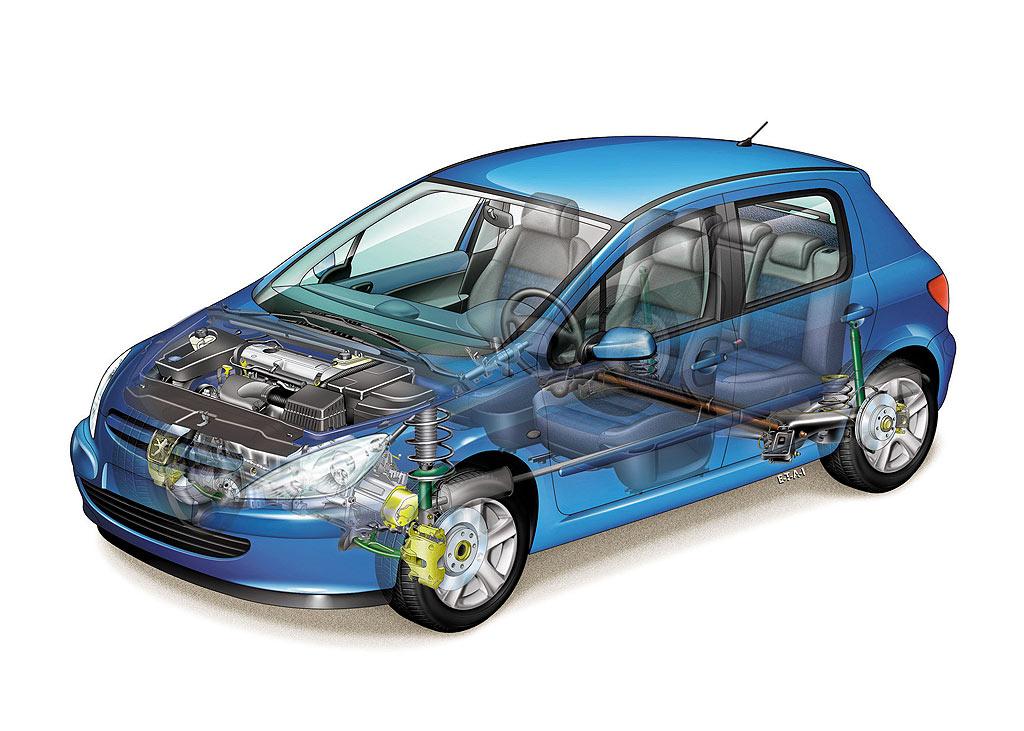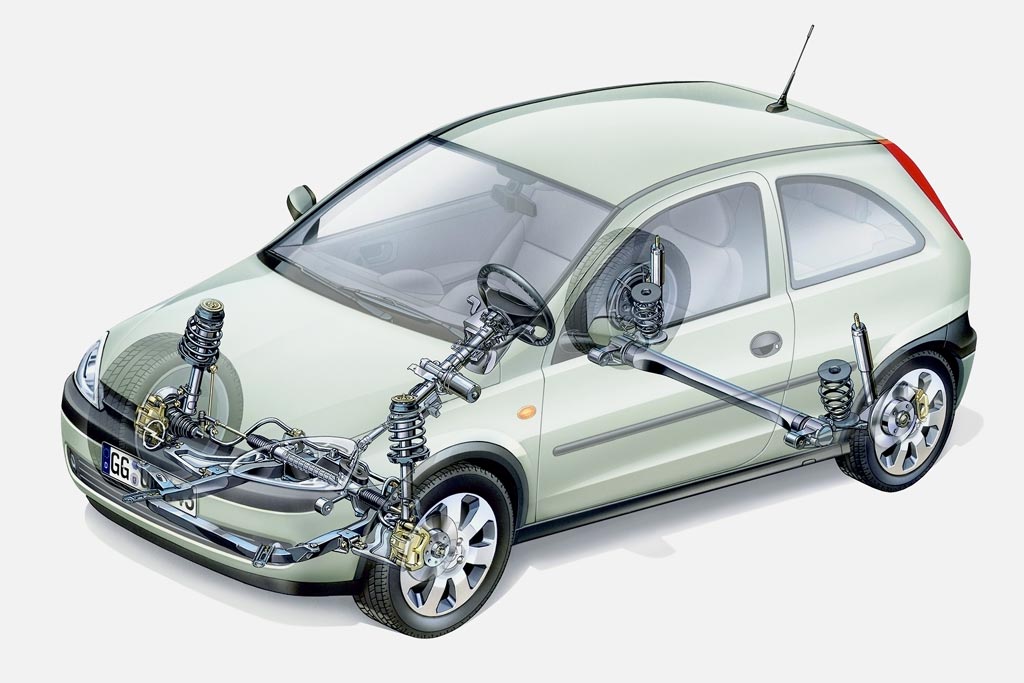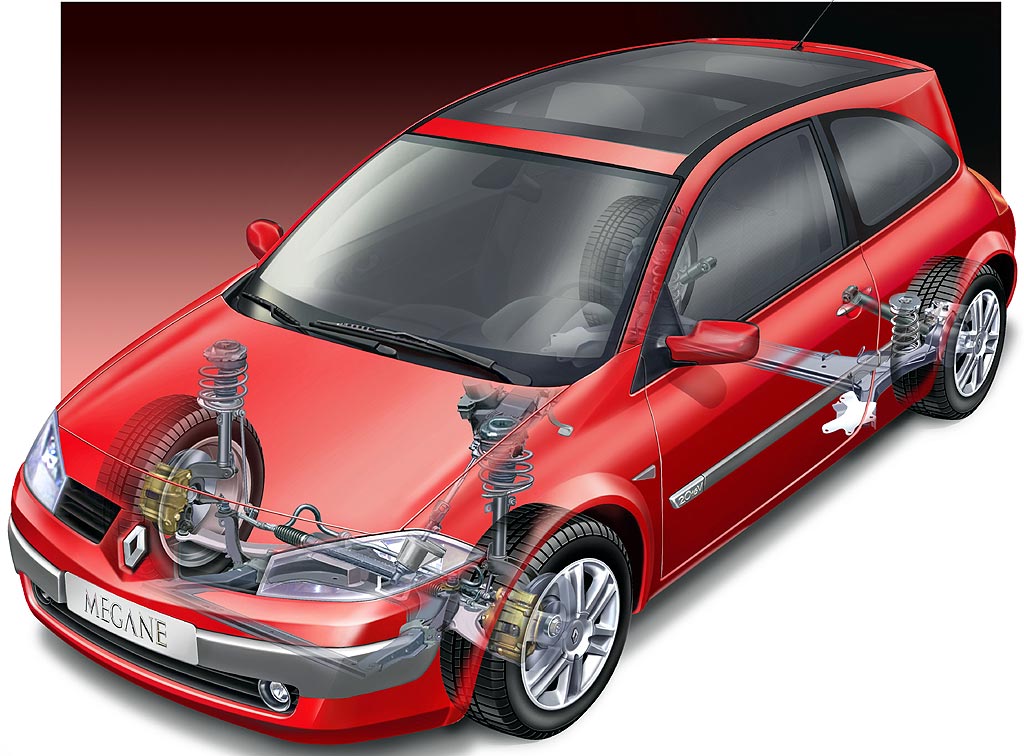|
This rear suspension configuration is increasingly popular in small to mid-size front-wheel drive cars. It is compact, simple, and inexpensive, while allowing good handling characteristics. The main disadvantages of the twist beam configuration are that the trailing arm pivot bushings are responsible for transmitting all the suspension loads to the car body. This forces the bushings to be relatively stiff, in order to avoid the compliance oversteer produced by lateral tire forces. This effect can be reduced or eliminated by using directional bushings, which compensate for the compliance oversteer tendency, albeit with an increase in cost. Another disadvantage of the twist beam suspension is that reciprocal wheel travel (when one wheel goes down and the one on the opposite side goes up) is restricted due to the presence of the twist beam. The main advantages are low complexity and cost, possibility of good handling dynamics, and good space efficiency. |
|
|
|
